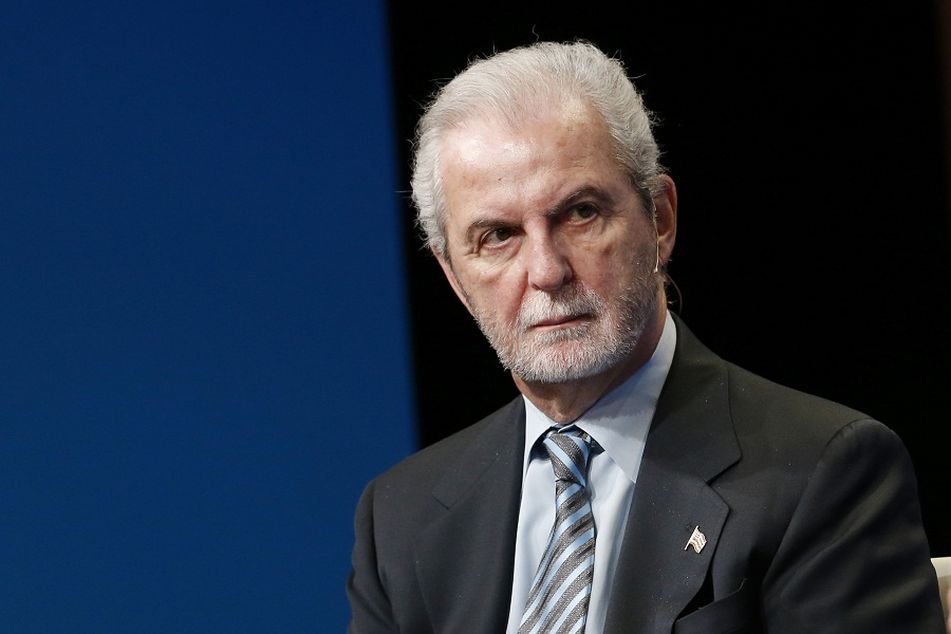Calamos restructures in bid to stem outflows, improve profits
 John Calamos, CEO and global co-chief investment officer of Calamos Asset Management Inc.
John Calamos, CEO and global co-chief investment officer of Calamos Asset Management Inc.
Co-CIO Gary Black, others, depart even as performance improves.
The man hired in 2012 to help rebuild assets under management, co-chief investment officer Gary Black, left the firm in September. About 12 other staffers also have left this year, sources said.
While net outflows at the firm have slowed in 2015 as investment performance improved under Mr. Black, Calamos’ assets under management still are less than half of what they were before the financial crisis.
Firm founder John Calamos Sr., 75, said he is confident that a reorganization implemented in September will help rebuild assets and improve profits. While Mr. Black had been a key architect of the new approach, Mr. Calamos said he is not concerned that Mr. Black would not be leading it. Mr. Calamos would not go into detail on the departure of Mr. Black or other staffers.
Mr. Black declined to comment for this story.
But Mr. Black’s departure already has led one major client to terminate Calamos — the $17.97 billion Illinois State Universities Retirement System.
(More: $25B institutional money manager takes a leap into retail)
Mr. Calamos, who serves as the firm’s chairman, CEO and global co-CIO, has much to gain from rebuilding assets; it could help raise the money manager’s stock price out of its stupor.
The company he controls, Calamos Family Partners Inc., owns almost 80% of the stock in Calamos Investments. The remainder is owned by Calamos Asset Management, the public entity that trades on the Nasdaq exchange.
The stock has traded in the $9 range this month, down from more than $16 four years ago.
Naperville, Ill.-based Calamos’ current operating profit margin is 15%, less than half the average of other publicly traded asset managers. Calamos Family Partners received $23 million in distributions from stock in Calamos Investments in the first nine months of 2015, company financial statements show. Calamos’ 2015 proxy statement also shows that Mr. Calamos received a compensation package worth more than $4 million in 2014.
ENDS CENTRALIZED APPROACH
The latest reorganization formally ends the centralized investment team approach Mr. Black began dismantling after his arrival, and puts the 70-plus person investment staff into four teams — growth equities, international and global equities, multiasset and alternatives — to improve investment performance. Each team leader — David Kalis, Nick Niziolek, Eli Pars and John Hillenbrand, respectively — holds the title of co-CIO.
Mr. Black lasted a little more than three years at Calamos. He joined the firm in August 2012 to replace Mr. Calamos’ nephew, Nick Calamos. Although a news release at the time said Nick Calamos “decided to step back from the day-to-day business of the firm to pursue personal interests,” sources interviewed said he left after frequent clashes with his uncle over how to fix poor investment performance in the firm’s strategies.
Sources said one reason Mr. Black left involved the team from his New York-based long-short investment business, which he sold to Calamos Investments when he joined the firm. Sources said five of the team’s seven investment professionals left this year in a dispute with John Calamos over compensation.
The unit, which managed about $100 million, since has been disbanded and Calamos Investments signed an agreement, in September, to acquire a new long-short team, Phineus Partners in San Francisco.
Calamos’ AUM was $23 billion as of Oct. 31, according to company data, down 5.7% from a year earlier and less than half of the peak of $46.6 billion in AUM as of Sept. 30, 2007.
But Robert Behan, Calamos’ president and head of global distribution, insists the tide is turning in the firm’s favor. While the company had $2.87 billion in net outflows in the first 10 months of 2014, net outflows for the same period in 2015 were $414 million, he said, the reduction occurring because investment performance is improving.
(More: Calamos Investments’ new closed-end fund tries to limit discount to NAV issue)
Still Mr. Calamos, the son of Greek immigrants who grew up in an apartment above his family’s Chicago grocery story and started the eponymous firm in 1977, will have to convince investors and consultants before the firm sees net inflows.
NEUTRAL RATING
Cara Esser, senior analyst with Morningstar Inc. in Chicago, said the firm has a neutral rating on Calamos because of concerns over management changes, including Mr. Black’s departure.
She said Morningstar is concerned about the firm’s stability, something that could ultimately affect investment performance. “We prefer firms and funds that have low (personnel) turn-over,” she said.
In the meantime, some institutional investment consultants are not recommending the firm because of the staff changes, acknowledged Jeff Kelley, Calamos senior vice president and head of marketing.
Calamos lost one of its biggest institutional clients in October when the Illinois State Universities Retirement System terminated its $340.2 million investment in the global opportunities strategy, an equity and convertibles strategy. Daniel L. Allen, the system’s chief investment officer, did not return phone calls, but in an e-mail to Pensions & Investments in October, he said “persistent turnover in key staffing levels and decline in assets under management (in) the strategy” led to the termination.
Mr. Calamos said the firm’s switch to the new co-CIO structure is part of an effort that started before Mr. Black was hired to put the investment focus on individual strategies and funds instead of a one-size-fits-all approach.
“What we had done prior to Gary Black coming aboard, we had set up a strategic plan where we wanted to move from one team, one process, to a multi-team approach,” he said. “We were focused on how to improve investment performance.”
He acknowledged making investment mistakes, including betting as much as 9% of all equity portfolios on gold mining stocks as an inflationary hedge back in 2010 in a top-down investment decision.
“We learned from that not to make that kind of big top-down decision across everything,” he said. “You get one thing wrong and all the strategies were negatively affected by it.”
Mr. Calamos said a firm investment committee made up of him and other top investment officials started meeting on a regular basis a year ago to hash out investment decisions and learn from each other.
PERFORMANCE IMPROVING
And performance has been improving in other Calamos strategies. Calamos’ $4.3 billion U.S. growth equity strategy returned 4.43% for the 12 months ended Sept. 30 compared to the Russell 3000 benchmark’s 3.21%, according to eVestment, after lagging the benchmark in the three-, five- and 10-year periods.
“Many prospects and clients appreciate the enhancements to our investment team as well as the improvements in performance,” said Mr. Behan, Calamos’ president. “We believe we are on track and will continue to show positive results.”
But whether that positive performance continues might be tested. Among the investment staff departures were four research analysts for U.S. growth equities.
Randy Diamond is a reporter at sister publication Pensions & Investments
Learn more about reprints and licensing for this article.








